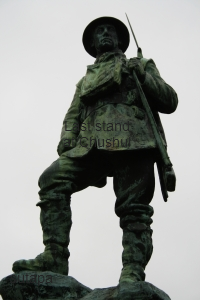
Last stand at Chushul
On October 20, 1962 the Chinese launched a war against India by attacking defensive line of the Indian army deployed along the Namka River in the North East Frontier Agency(NEFA), later renamed Arunachal Pradesh. During the first few weeks, the Chinese army concentrated on the eastern sector, viciously fighting the Indian soldiers and rapidly pushing them back. On the western front, in Ladakh, they started building up their forces but didn’t attack immediately.
The gateway, in Ladakh, to the Indus valley was through Chushul. 114 Infantry Brigade had been given the task of defending this area. They were to make sure that the Chinese did not get through to Chushul. It was decided that the brigade should occupy positions carved into the heights of the snow-covered mountains around Chushul and its airport. This way they could dominate the region, Any intrusions could be countered immediately and the enemy could not take the cover of stealth. But it was vast area so the brigade had to be separated into smaller companies that were quite isolated from each other. Most significantly, the brigade’s only artillery battery with heavy guns, was broken up among the companies.
An important post in this desolate barren Ladakh desert is Rezang La. This rocky region was literally the door to Chushul. It would need to be taken before any attacker could proceed towards Chushul. Its height is over 17,000 ft making it an equally powerful feature for the defender to hold.
The responsibility to hold it was given to a company of 13 Kumaon battalion, commanded by Major Shaitan Singh. Coming from a military family, Shaitan Singh was a sombre, sincere, upright officer. His faith in God was as strong as his paternal feelings for his men. He took keen interest in their welfare and training. The men under his command reciprocated his confidence in them.
The brigade commander and his commanding officer were convinced that nobody better than Shaitan Singh could be given this duty. Though the Kumaonis had neither clothes nor shoes to combat the freezing temperatures, the senior officers were confident that it will be a tough if not an impossible task to dislodge Major Shaitan Singh and his men from Rezang La.
Finally on December 18, 1962, around midnight, the Chinese attacked Rezang La. They opened up with a heavy barrage of artillery and mortar fire, supported by light machine gun fire. The weapons held by Shaitan Singh’s men were outdated, their ammunition was limited, and there was hardly any artillery support. The ground was frozen hard so that no bunkers had been dug to protect them from the heavy gunfire. Notwithstanding all this the gallant Kumaonis met the enemy onslaught head-on.
As his men kept fighting Shaitan Singh kept moving among his men and lending a hand wherever the situation was getting out of hand. Seeing their leader constantly with them, motivated the men to continue fighting against all odds.Consequently Shaitan Singh was seriously wounded but refused to be evacuated. The battle raged unabatedly around these brave men. Some section posts were taken by the enemy and then retaken by Shaitan Singh’s men. When the ammunition depleted, the battle took on the most primitive and brutal form. The Kumaonis fought hand-to-hand refusing to yield.
Long before dawn broke, the smoke and dust at Rezang La gradually cleared to an eerie silence. The last of the brave company had fallen at their post. When all had been lost, three badly wounded men, who had survived , decided it was time to evacuate their completely incapacitated leader.
They half carried and half dragged him for some distance but the task was impossible for the men. The loss of blood had made them too weak. Eventually, Shaitan Singh ordered his men to leave him behind and find their way to the battalion headquarters. They left him reclining against a rock.
The Chinese suffered heavy losses at Rezang La and had been effectively halted by the gallant stand taken by Major Shaitan Singh and his handful of Kumaonis. They no longer attempted to enter the Chushul plains.
Only the three survivors were left to tell the awesome tale of the heroic battle at Rezang La.
Next summer, when Rezang La was revisited, the dead bodies of the Kumaonis , some still clutching their weapons, and the extent of their wounds reconstructed the story of their desperate struggle to courageously carry out their duty. Major Shaitan Singh’s body was found leaning against the rock, where the men said they had left him. He must have slowly bled and had been frozen to death.
The story of the last stand at Chushul is even now recounted around campfires. It serves to inspire our brave soldiers in doing their duty in the midst of difficult situations. Major Shaitan Singh was awarded the Param Vir Chakra posthumously for his valour.
About the Author







Comments